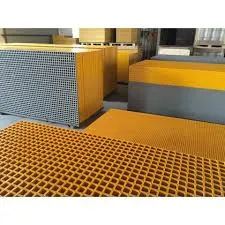
-
 Afrikaans
Afrikaans -
 Albanian
Albanian -
 Amharic
Amharic -
 Arabic
Arabic -
 Armenian
Armenian -
 Azerbaijani
Azerbaijani -
 Basque
Basque -
 Belarusian
Belarusian -
 Bengali
Bengali -
 Bosnian
Bosnian -
 Bulgarian
Bulgarian -
 Catalan
Catalan -
 Cebuano
Cebuano -
 China
China -
 China (Taiwan)
China (Taiwan) -
 Corsican
Corsican -
 Croatian
Croatian -
 Czech
Czech -
 Danish
Danish -
 Dutch
Dutch -
 English
English -
 Esperanto
Esperanto -
 Estonian
Estonian -
 Finnish
Finnish -
 French
French -
 Frisian
Frisian -
 Galician
Galician -
 Georgian
Georgian -
 German
German -
 Greek
Greek -
 Gujarati
Gujarati -
 Haitian Creole
Haitian Creole -
 hausa
hausa -
 hawaiian
hawaiian -
 Hebrew
Hebrew -
 Hindi
Hindi -
 Miao
Miao -
 Hungarian
Hungarian -
 Icelandic
Icelandic -
 igbo
igbo -
 Indonesian
Indonesian -
 irish
irish -
 Italian
Italian -
 Japanese
Japanese -
 Javanese
Javanese -
 Kannada
Kannada -
 kazakh
kazakh -
 Khmer
Khmer -
 Rwandese
Rwandese -
 Korean
Korean -
 Kurdish
Kurdish -
 Kyrgyz
Kyrgyz -
 Lao
Lao -
 Latin
Latin -
 Latvian
Latvian -
 Lithuanian
Lithuanian -
 Luxembourgish
Luxembourgish -
 Macedonian
Macedonian -
 Malgashi
Malgashi -
 Malay
Malay -
 Malayalam
Malayalam -
 Maltese
Maltese -
 Maori
Maori -
 Marathi
Marathi -
 Mongolian
Mongolian -
 Myanmar
Myanmar -
 Nepali
Nepali -
 Norwegian
Norwegian -
 Norwegian
Norwegian -
 Occitan
Occitan -
 Pashto
Pashto -
 Persian
Persian -
 Polish
Polish -
 Portuguese
Portuguese -
 Punjabi
Punjabi -
 Romanian
Romanian -
 Russian
Russian -
 Samoan
Samoan -
 Scottish Gaelic
Scottish Gaelic -
 Serbian
Serbian -
 Sesotho
Sesotho -
 Shona
Shona -
 Sindhi
Sindhi -
 Sinhala
Sinhala -
 Slovak
Slovak -
 Slovenian
Slovenian -
 Somali
Somali -
 Spanish
Spanish -
 Sundanese
Sundanese -
 Swahili
Swahili -
 Swedish
Swedish -
 Tagalog
Tagalog -
 Tajik
Tajik -
 Tamil
Tamil -
 Tatar
Tatar -
 Telugu
Telugu -
 Thai
Thai -
 Turkish
Turkish -
 Turkmen
Turkmen -
 Ukrainian
Ukrainian -
 Urdu
Urdu -
 Uighur
Uighur -
 Uzbek
Uzbek -
 Vietnamese
Vietnamese -
 Welsh
Welsh -
 Bantu
Bantu -
 Yiddish
Yiddish -
 Yoruba
Yoruba -
 Zulu
Zulu
frp storage tank
Understanding FRP Storage Tanks An Overview
FRP (Fiberglass Reinforced Plastic) storage tanks have gained significant traction in various industries due to their unique attributes and advantages over traditional materials like steel and concrete. These tanks are specifically designed to store various substances, including chemicals, water, and oil. As industries strive for efficiency and durability in their storage solutions, FRP tanks provide a compelling option.
What are FRP Storage Tanks?
FRP storage tanks are composite structures made by combining fiberglass reinforcement with plastic resin. This combination results in a lightweight yet robust material, making FRP tanks particularly advantageous for a wide range of applications. They are manufactured using a process called filament winding or hand lay-up, which involves layering fiberglass cloth along with resin to create a strong and leak-resistant tank.
Key Advantages of FRP Storage Tanks
1. Corrosion Resistance One of the primary reasons for the popularity of FRP storage tanks is their exceptional resistance to corrosion. Unlike steel tanks, which can rust and degrade when exposed to harsh chemicals, FRP tanks maintain their integrity over time. This quality is particularly beneficial in industries that deal with aggressive chemicals, ensuring longer lifespan and reduced maintenance costs.
2. Lightweight The lightweight nature of FRP tanks makes them easy to transport and install. This is especially advantageous in remote locations or areas with challenging terrain where heavy lifting equipment may not be readily available. The lower weight does not compromise the strength, making them a practical choice for various applications.
3. Design Flexibility FRP tanks can be customized to meet specific design requirements. Their flexibility allows manufacturers to create tanks of various sizes, shapes, and configurations, catering to the unique needs of different industries. Additionally, the material can be molded to accommodate complex designs while ensuring structural integrity.
frp storage tank

4. Thermal and Insulation Properties FRP tanks can be manufactured with thermal insulating properties, making them suitable for storing temperature-sensitive substances. This characteristic is particularly important in applications where variations in temperature can affect the quality or stability of the stored material.
5. Environmental Friendliness As industries focus on sustainable practices, FRP tanks offer an eco-friendly storage solution. The composite material can be produced with recycled content, and their durability means that they do not need to be replaced frequently, thereby reducing waste.
Applications of FRP Storage Tanks
FRP storage tanks find applications in various sectors, including
- Chemical Processing Used for storing aggressive chemicals safely. - Water Treatment Employed in drinking water storage and wastewater management. - Oil and Gas Essential for storing fuel and lubricants due to their resistance to hydrocarbons. - Food and Beverage Safe for storing food-related products, ensuring that there are no leaching contaminants.
Conclusion
As industries continue to evolve and prioritize safety, efficiency, and environmental sustainability, FRP storage tanks emerge as a formidable option. Their unique benefits—ranging from corrosion resistance and lightweight construction to customization and environmental friendliness—make them a preferred choice for various applications. As technology advances, the manufacturing processes and capabilities for FRP tanks are likely to improve further, solidifying their role as an indispensable asset in modern storage solutions. For businesses examining their storage needs, investing in FRP tanks could provide long-term advantages in durability, safety, and cost-effectiveness.
Latest news
-
Exploring the Benefits of Top Hammer Drifter Rods for Enhanced Drilling PerformanceNewsJun.10,2025
-
High-Precision Fiberglass Winding Machine for GRP/FRP Pipe Production – Reliable & Efficient SolutionsNewsJun.10,2025
-
FRP Pipes & Fittings for Shipbuilding - Corrosion-Resistant & LightweightNewsJun.09,2025
-
Premium FRP Flooring Solutions Durable & Slip-ResistantNewsJun.09,2025
-
Premium Fiberglass Rectangular Tanks Durable & Lightweight SolutionNewsJun.09,2025
-
Tapered Drill String Design Guide Durable Performance & UsesNewsJun.09,2025









